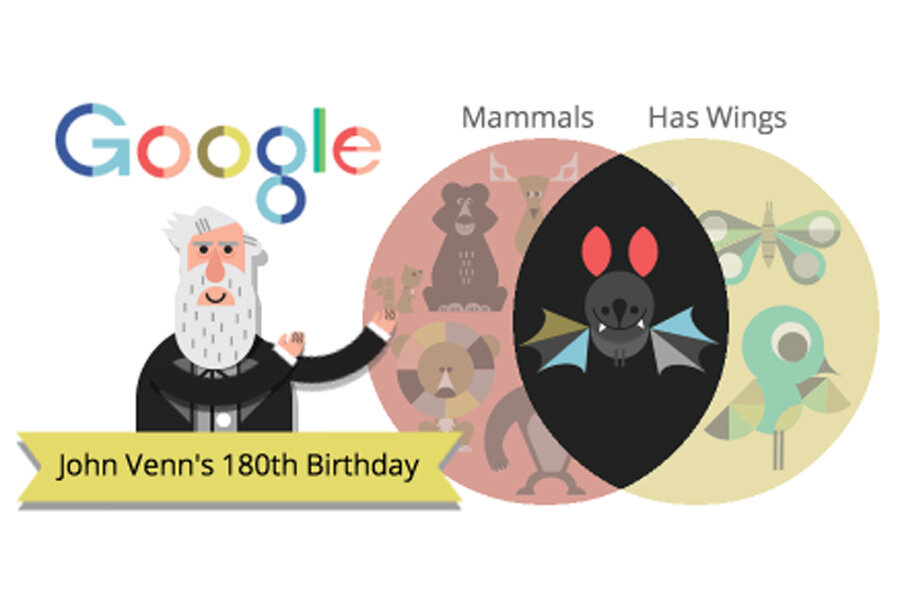John Venn: Google Doodle reveals what unites us
Loading...
On Monday, Google honored the work of John Venn, an English philosopher who devised a clever way to group things visually. His namesake Venn diagrams use circles to gather together similar traits and to reveal what unites us and what divides us.
For example, in one circle we have "mammals" (cats, goats, humans). In the other circle are "things with wings" (airplanes, butterflies, cartoon characters who drink Red Bull). But with a Venn diagram, the two circles overlap. So, what is a mammal that has wings? Click on the interactive Google Doodle to reveal at least one answer: bats.
Google sketched up several fun combinations: What is a form of "sea life" that is "tiny." How about the itty-bitty plankton that whales eat? What "transport" "thrives in cold"? A Zamboni, which, by the way, received its own Google doodle last year.
Dr. Venn actually never used the term "Venn diagram." He called them "Eulerian Circles," because they were similar to "Euler diagrams," introduced by Leonhard Euler a century earlier. But Euler diagrams are slightly different. Euler had circles within circles. For instance, imagine a big circle for "sea life" and a smaller circle inside that one that says "fish" and another small circle for "coral."
Rather than have small circles inside big circles, Venn's innovation was introducing overlapping circles. Small improvement, sure. But the change was substantial enough that school children across America learn Venn's name. Don't feel too bad for Euler. If you took high school math, you can thank him for popularizing pi, trigonometric functions, and the math term "e" (which is short for Euler's number).
"My favorite [combination] that I worked on would probably have to be the kraken [sea life + mythical]," writes a Google representative that worked on the Venn doodle. "I loved the idea of taking something that is utterly terrifying, such as a large sea creature that devours entire ships, and turning it into just a little dude having a bit of fun, albeit still at the expense of the ship and its crew."
Speaking of "having a bit of fun," did you catch Google's reference to David Bowie? If you combine "musical" and "in space," the interactive doodle presents a little astronaut strumming a guitar. This is a wink to Canadian astronaut Chris Hadfield, who recorded his own version of David Bowie's "Space Oddity" from the International Space Station.
For more on how technology intersects daily life, follow Chris on Twitter @venturenaut.





